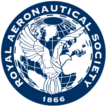As NASA’s Space Shuttle winds down towards its final flight — PAT NORRIS reports from Kennedy Space Centre, Florida, on the countdown to its retirement and successor space access systems.
This is a full article published in Aerospace International: October 2010. As a member, you recieve two new Royal Aeronautical Society publications each month - find out more about membership.
This year’s flight of the Space Shuttle Atlantis brings us close to the end of an important chapter in the history of the space age. Space Transportation System Flight 132 was launched from Cape Canaveral on 14 May this year following a near-perfect count-down and journeyed four million miles before landing 12 days later.
The crowds at the Cape were larger than usual for this, the third or perhaps fourth last of the Shuttle fleet as a whole. NASA counted 40,000 viewers, and many thousands more lined the roadsides and beaches for miles around. The last two firmly scheduled Shuttle flights are for November 2010 and February 2011, so viewers will not benefit from the beautiful Florida summer weather enjoyed by those (including this correspondent) who watched the final Atlantis launch. An extra Shuttle flight has been proposed and funded for summer 2011 and this article is written is still awaiting final approval. With the Shuttles now entering retirement, it is timely to compare their accomplishments with those promised when they were conceived, and to consider what will replace them.
This was Atlantis’s 32nd flight, and the eleventh to the International Space Station (ISS). British-born astronaut, Dr Piers Sellers, onboard Atlantis noted that there had been many changes to the ISS compared to its very incomplete state when he last visited it on STS-121 four years previously. Reflecting the almost finished state of the Station, the cargo brought by Atlantis comprised spare parts, replacement batteries and tools, and just one significant new facility — the Russian Mini Research Module: MRM-1. Besides providing storage and some control features, MRM-1 provides a docking point for visiting Soyuz (manned) and Progress (unmanned) vessels. Six astronauts are now onboard ISS as a rule, so the docking ports are in frequent use as the crew and their consumables are replenished, or to hold the two Soyuz ‘lifeboat’ spacecraft for use by the crew in an emergency. Funding for ISS itself has been agreed up to 2020, and extensions to 2030 are being discussed. Now that ISS is almost complete, a review of its promise versus its actual configuration could well form the subject of a future article.
The Space Shuttle was intended to significantly reduce the cost of placing objects and people in orbit. The rockets of the 1960s had evolved from the German V-2 of the 1940s, culminating in the enormous Saturn V rocket that took astronauts to the Moon. To achieve cost reductions, the new approach was to re-use almost every part of the Shuttle in comparison with the ‘expendable’ nature of all other launchers. But the costs increased instead of falling.
Design compromises
Part of the reason for this failure to reduce cost was the compromise taken at the start whereby the solid rocket boosters and the external tank fall back into the ocean instead of flying back to the launch site. The empty solid rocket boosters are recovered by ships as they float out in the Atlantic and most of the external tank burns up in the atmosphere with its remnants left to sink into the ocean. There were many reasons for these and other design compromises, including the desire of the US military to maintain a production line of solid fuel rockets as a complement to that of its Inter-Continental Ballistic Missiles (ICBM) for nuclear deterrence.
The Space Shuttle is an ultra hi-tech rocket. Apart from the two strapped-on solid fuelled rockets that it ditches after two minutes, the Shuttle motors are fuelled by liquid hydrogen (at –253°C) and liquid oxygen. This cryogenic mixture is highly efficient but the engine and fuel storage designs are correspondingly sophisticated and complex. The solid fuel strap-on rockets are the world’s largest, requiring a special factory in which to manufacture them and special vessels and vehicles to transport them to Florida. Ground operations involving large quantities of cryogenic liquids as well as the solid fuel in the strap-on rockets are dangerous and difficult, and therefore expensive.
Another weakness of the Shuttle was the management style at NASA. A cautious bureaucratic mindset had replaced the gung-ho spirit that got the Apollo mission to the Moon in the 1960s. Major decisions about the Shuttle were made by senior NASA managers, separated and relatively insulated from the ‘rocket science’ at the engineering level. The inter-organisational arguments inside NASA all too easily escalated to the political level as Congressmen and Senators argued for whatever design decision favoured the officials and industry in their constituency or state.
The Shuttle was intended to be the workhorse of space, launching satellites to any orbit and astronauts to any destination. It was to be a jack-of-all-trades and, is as so often the case, ended up being the master of none, at least in the cost sense.
Sadly it didn’t even provide the level of safety that the conservative-minded NASA officials promised. Two accidents in 132 flights, with all onboard killed in both cases, is not a record of which to be proud.
Was it worth it?
Even its successes look suspect on close examination. It refurbished the Hubble Space Telescope five times, extending Hubble’s life and enhancing its capabilities for 20 years. But at what cost? Each Shuttle mission to Hubble cost one to $2bn at today’s prices — the exact cost depends how much of the Shuttle and astronaut cost you assign to a mission. Many parts of Hubble rely on the engineering concepts and technology of the 1970s when it was designed so, instead of refurbishing it, could series of completely new Hubbles have been built with newer technology and launched on conventional rockets at less overall cost? Many astronomers think so but the decision to send astronauts to repair and improve Hubble was as much a political statement about American capability as it was scientific —no other nation sends astronauts to service the world’s most famous telescope.
For the past 15 years the stories of the Shuttle and the ISS have been closely linked. It has taken 34 Shuttle flights to-date to build and maintain ISS. NASA officials admit that such a large number of flights was unwise, and, in future, they would aim to complete any similar project with no more than four or five launches, i.e. use a bigger rocket. The Shuttle is much less powerful than the Saturn V rocket, able to carry into orbit only about a quarter of the mass of its Apollo-era predecessor (excluding the mass of the Shuttle or Saturn itself). In return for that loss of power the Shuttle is able to return to Earth and be used many times over, it can act as a temporary laboratory during the fortnight or so it stays in space, it carries six astronauts compared to the three on Saturn, and so on.
Military heritage
Aerospace International Contents -October 2010
* Aerospace News 4
* News Roundup 5
* UK civil aviation - a new direction 12
New UK government airport policy
* From Ironworks to networks 14
A profile of Northrop Grumman
* Twilight of the Shuttle 18
An appreciation of the NASA Space Shuttle
* Essential links 21
Air transport and remote communities
* Training for survival 23
Swedish Air Force medical training centre
* Air defence - who needs it? 26
Air defence and missiles update
* Unfinished business 30
Focus on business jet market
* The last word 34
Keith Hayward on Parliamentary Select Committees
* Letters 35
Cockpit automation vs human element
The story of the Atlantis Shuttle illustrates the strengths and weaknesses of the whole fleet. Its inaugural mission in 1985 was to place an unmanned satellite in orbit — a classified Department of Defense satellite. On later flights Atlantis placed three more DoD satellites in orbit as well as nine scientific satellites and two inter-planetary probes. The decision by NASA to use the Shuttle to launch all of its satellites was intended to ensure that the Shuttle benefited from the economies o scale expected to be associated with multiple launches. When Shuttle costs stayed high, Europe’ Ariane rocket was given a clear field throughout the 1980s to launch unmanned satellites at a reasonable cost and without the bureaucracy and security restrictions of the Shuttle. Ariane thereby established itself as the market leader in the commercial launch field, a position it holds to this day. After the explosion of the Space Shuttle Challenger in 1986, NASA restricted the use of the Shuttle to human missions and returned to using expendable rockets where possible to launch its robotic satellites.
From 1995, Atlantis made a series of seven visits to the Russian Mir space station. Post-Cold War politics led to the International Space Station absorbing Mir and all other human spaceflight activities of the US and Russia as well as the less ambitious endeavours of Canada, Europe and Japan. In 2000 Atlantis made the first of its 11 visits to the ISS, during which time the Station expanded from its initial 20ton size to its present 370ton configuration. In other demonstrations of its flexibility, Atlantis visited the Hubble telescope (in 2009), deployed the European retrievable satellite EURECA in space and launched massive satellites such as the Galileo spacecraft to Jupiter, the Compton Gamma Ray Observatory and one of the Tracking and Data Relay Satellites that provide continuous communications with Shuttles and ISS.
Successor systems
At least one of the successors to the Shuttle is taking the opposite approach to the latter’s sophisticated state of the art technology. The Falcon rocket being developed by Space-X uses kerosene, a fuel that can be stored at room temperatures, plus liquid oxygen. Its efficiency as a fuel is less than the Shuttle’s all-cryogenic system but the savings in manufacturing, handling, storage and operations are said to outweigh that. The basic Falcon-1 rocket can carry a small satellite to orbit and, to deal with bigger jobs, nine Falcon-1s are tied together to form the first stage of the Falcon-9, with yet another slightly modified Falcon-1 engine acting as the second (upper) stage — the first Falcon-9 was successfully launched in June 2010. One of the benefits of this approach is that the manufacturing process can exploit techniques of mass production as the basic Falcon-1 engine is turned out in large quantities.
The Falcon-9 has been selected by NASA to re-supply the ISS starting in 2011 in a contract valued at $1·6bn for 12 flights. Up to six tons of cargo will be carried to the ISS in the Dragon spacecraft on top of the Falcon-9, and up to three tons of cargo returned to Earth. Under a separate $1·9bn contract covering eight flights, Orbital Sciences has also been selected to deliver and retrieve ISS cargo using its new Taurus-II rocket. The first stage of the Taurus-II uses similar fuels to the Falcon-9 but is a more conventional monolithic construction. The second stage is a solid fuelled rocket having no commonality with the first stage.
Falcon-9 and Taurus-II are not yet cleared to carry humans so, once the Shuttle retires, NASA will pay Russia to carry US astronauts to and from the ISS until Falcon or Taurus has the necessary permits or NASA develops a new rocket. Russia is charging about $50m per astronaut, round-trip. In a sharp break with the NASA practice of designing its main rockets in-house, both the Taurus-II and the Falcon-9 rockets were designed by industry with little or no influence from NASA.
Meanwhile NASA itself has been sent back to the drawing boards to design a new large rocket. Even if Falcon-9 and Taurus-II become certified for astronaut transport, they will never match the heavy lift capability of the Shuttle. The plan under President George W. Bush had been to develop a family of rockets called Ares to take humans back to the Moon. Ares-I would have launched astronauts into Earth orbit in the Orion capsule, removing US dependence on Russia for human access to the ISS. The muchlarger Ares-V would have been more powerful than the Apollo-era Saturn-V and would have been the work-horse for lunar exploration missions.
Balking at the cost of this plan, the Obama Administration has cancelled the return of humans to the Moon and instructed NASA to develop a new heavy lift rocket that can take astronauts beyond Earth’s gravity, for example to nearby asteroids but will not be powerful enough to deal with the Moon’s gravity. Rather than re-using technology from the Space Shuttle and the Apollo programme as was proposed for Ares, the new scheme is intended to incorporate the latest materials and technologies, and thus serve as the basis for a new generation of NASA rockets.
Summary
Back to Earth? While the Shuttle may have a final flight in summer 2011 - what does the future hold for US spaceflight? (NASA)
In the short term, NASA has no successor to the Space Shuttle, relying instead on a mix of Russian and commercial rockets for at least the next five, and probably ten, years. The Falcon-9 has made one successful launch and the Taurus-II hopes to emulate that soon, so it is early days in the story of the post-Shuttle-era.
This is a full article published in Aerospace International: October 2010. As a member, you recieve two new Royal Aeronautical Society publications each month - find out more about membership.






